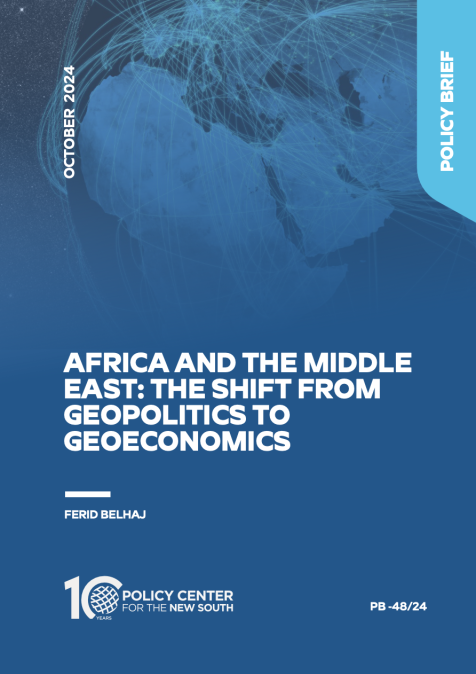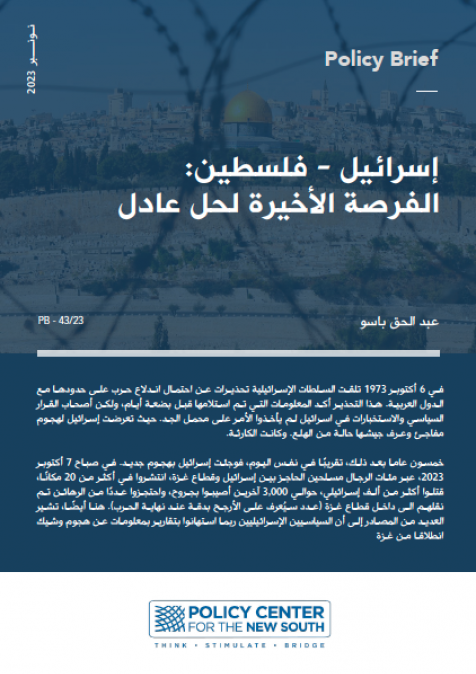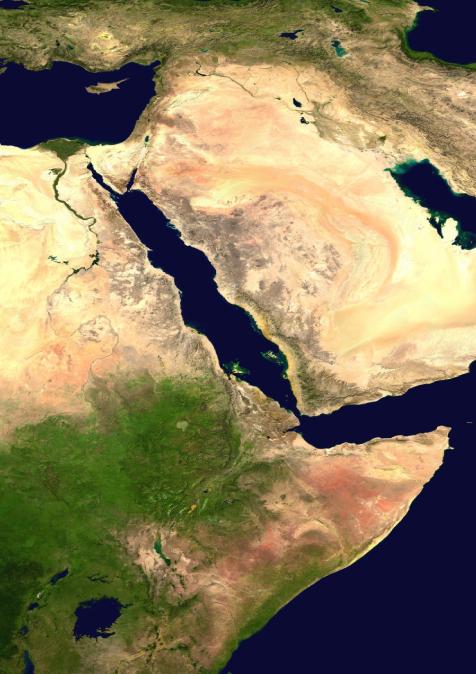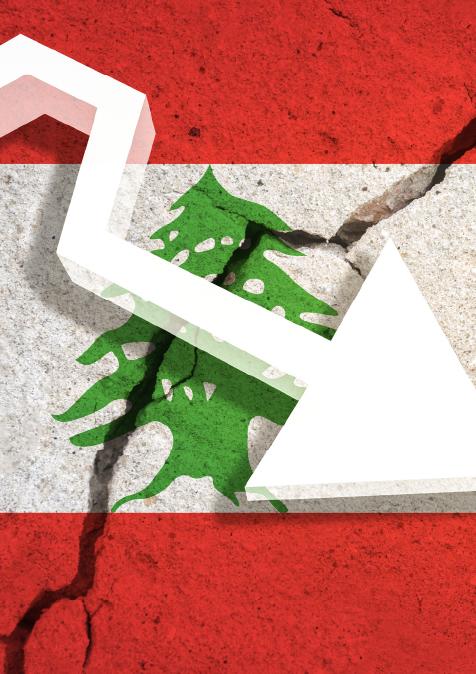Publications /
Opinion
Usually the gray colored drones take off from Dirkou in Northeastern Niger between ten at night and four in the morning. There are no signs of blinking lights, neither on the runway nor on the flying machines, signaling their presence. Niger’s interior minister Mohamed Bazoum pretends not to know about secret operations on a small commercial airport in his country’s desert region -“all I know is that they are American” (Penney et al, 2018). To be precise, we're talking about drones controlled by the CIA. The agents were searching for an enemy, which had been declared defeated, some may say humiliated. The enemy is ISIS, a call from fanatics who wish to create a caliphate, a re-born empire cultivating extremist Islamic principles, reviving forgotten punishment means including public flogging or public executions. The Islamic State celebrated a revival by occupying large areas of Iraq and Syria as their empire. They declared Raqqa as their capital and beheaded the enemy, using torture and assassinations against citizens doubting their message.
An estimated 40,000 to 60,000 zealous militants from 120 different countries, among them 2,500 devotees from Saudi Arabia, were ready to ascend to paradise for their leader, Abu Bakr al-Baghadi. And more than five-to-six thousand foreigners were ready to assist in the return to “Islam’s greatness,” united in gruesome and repulsive warfare by extremists who erased their culture and respect for human dignity from their conscience. ISIS seemed unstoppable, waltzing through Arab nations, occupying oil terminals, plundering weapon depots of the enemies’ armies (who seemed unprepared for warfare), enriched by religious dogmatists, and financially supported by conservative elements in the Gulf States and Saudi Arabia. The illusion of a caliphate lasted just about four years. The US, France, and the UK all have reacted since the disciples of the caliphate did not stop at the Mediterranean shores, but threatened democracies of the West with their destructive and brutal strategy. When ISIS had to evacuate Raqqa last October, and lost control of Mosul in July, bombarded by the US Air Force, which launched an estimated 30,000 aerial strikes on ISIS militants and military infrastructure, the American President declared victory and was publicly explaining it was time to “bring the boys home.” The “boys,” representing about 2,000 GIs supporting rebel forces of the Syrian Defense Force (SDF), mainly Kurds, admired warriors in their combat against ISIS.
“A VERY INHOSPITABLE AREA”
“As far as Syria is concerned,” Donald Trump declared, “our primary mission in terms of getting rid of ISIS, is completed.” The US President explained to his nation, the US has spent “trillions of dollars” in the Middle East over the past seventeen years, and “we get nothing-nothing out of it.” Since 2014 and up until June 2017, the Pentagon spent $14.3 billion on fighting ISIS. A couple thousand ISIS militants were killed in action, and a few hundred were taken prisoners at Raqqa or Mosul. The question remains, where did the militant masses go?
A few hundred, possibly thousands escaped to Turkey, or the Philippines, Afghanistan perhaps, or into the deep desert in Southern Libya. Some have dispersed to locations such as the Euphrates River Valley, around small towns like Hajin, Makhmur, Tuz Khurmatu, Bokmal, or near the city of Palmyra, which is under control of the Assad regime and its allies, or "their former strongholds in Anbar, Kirkuk and Diyala provinces - a rugged rural region in the northeast of the country known as insurgent stronghold," as noted by Rhys Dubin in his article published by Foreign Policy.
“It is a very inhospitable area,” stated US Colonel Ryan Dillon of the US led coalition against the Islamic State, “but it is hospitable to people who want to hide out; ISIS has been able to dig tunnels and store weapons, ammo and bomb-making material” (Dubin, 2018).
A recent United Nations report insisted that the Sunni jihadist movement still has between twenty thousand and thirty thousand members at loose in Iraq and Syria, including thousands of active foreign terrorist fighters. A Pentagon report published in August contradicts earlier US claims that most ISIS fighters had been eliminated. Instead, the military analysts concluded the group has about fourteen thousand ISIS fighters in Syria, and up to seven thousand in Iraq.
“I don’t have high confidence in those particular numbers,” said General Joseph Dunford, the Chairman of the Joint Chiefs of Staff, last month, “Over the last two and a half years, ISIS has lost about ninety percent of the ground that they’ve held. They have lost significant access to resources, and the flow of foreign fighters has been significantly reduced. Those are all quantifiable.”
Nevertheless, the Commander in Chief, not the most reliable accountant, has declared victory. The Pentagon was more careful and convinced the President to extend the presence of the troops cooperating with Kurdish units in the fight against ISIS for six months. General Paul Selva, the Vice Chairman of the Joint Chief of staff, confirmed (at the beginning of this year) that the remaining Islamic State leadership, even while on the run, still has “fairly robust communications” with its shadowy networks of fighters escaping capture. In the State of the Union, Donald Trump’s address showed a second of realism: “There is much more work to be done.” The question though has not been answered: where have all the ISIS fighters gone? Or did the Pentagon battle ghosts?
“ONE OF THE MOST POWERFUL TERRORIST GROUPS IN HISTORY”
Was their strength in figures and numbers based on assessments from satellite images, informers, traitors, imprisoned, or tortured senior ISIS leaders? Nobody really knows. The Pentagon claimed in the past that Saddam Hussein was hiding nuclear weapons; fifty years ago, the generals of Washington promised that triumph in Vietnam was just a matter of weeks. Just a hundred thousand more troops were needed for the final push. We know the end - the last Americans fled in an overcharged helicopter from Saigon - from the roof of the embassy. According to an article by the Soufan Center, which was founded by Ali Soufan, a former FBI terrorism specialist, from at least 2014 estimates of the groups’ strengths have varied greatly, with the coalition against the Islamic State having somehow reportedly killed one hundred percent of the groups estimated members several times. The only clear conclusion from the lack of clarity, the center confirms, is that ISIS “was and remains among the most powerful terrorist groups in history, with no shortage of weapons and willing recruits.” Apparently, the White House advisors convinced their Commander in Chief of the new reality.The troops scheduled to be withdrawn these days,will remain on the battle field. A sober conclusion by the New Yorker confirms the fear of the American generals: "ISIS is making a comeback."
Even “the elusive emir Abu Bakr al-Baghdadi, whom Russia claimed to have killed in 2017, reemerged with an hour-long broadcast, his first in a year. He acknowledged that his followers had been tested with ‘fear and hunger’” (Wright, NewYorker, 2018).
The leader offered an alternative to the combat against the non-believers and foreign enemies: “The land of Allah is wide and the tides of war change. For the believer mujahedeen, the scale of victory or defeat is not tied to a city or town being stolen or subject to those who have aerial superiority, or intercontinental missiles or smart bombs” (Wright, NewYorker, 2018).
Of the Europeans volunteering to help in the creation of a caliphate, some 1,500 apparently returned to their countries of origin. Are we certain? Germany officially confirms the return of about a hundred militants. Are others hiding? Planning to remain underground, as their leader apparently considers as a (temporary) solution ? Time to regroup. Time to rearm.
"The thought that foreign fighters will quietly leave Syria and return to their jobs as shopkeepers in Brussels, in Copenhagen, is ludicrous," argued General Paul Selva, Vice Chairman of the US Joint Chiefs of Staff, “that’s a very compelling problem” (Schmitt, New York Times, 2018).
By early 2016, an estimated 1,500, mostly foreign fighters, were active in the Libyan city of Sirte, projecting enough military power that Vice admiral Clive Johnstone, commander of NATO’s Allied Maritime Command, warned that ISIS militants aspired to build a maritime branch that could carry out attacks in the Mediterranean Sea against tourists and ferries.
Hundreds, possibly more, ISIS fighters escaping from the battle zones in Syria and Iraq have, possibly, joined comrades in the desert, who were pushed out by US-supported militia groups of their coastal bases in December 2016, possibly regrouping to advance their strategy in the largely lawless Libya, or trying to copy the success of Islamic State units in Sinai. They are succeeding with a low-level insurgency that includes suicide bombers, focusing on their own society and local government. The Islamic activities on Sinai worried the government in Cairo enough to accept assistance by the Israeli Air Force, attacking ISIS targets in the name of Egypt. The group “Islamic State-Sinai Province,” which thrives to establish a state strictly grounded in the principle of Islam, sabotaged an Egyptian pipeline known to transport gas to Israel, and did not scare away from attacking the Israeli resort town of Elat either.
“A REGIONAL THREAT WITH INTENT TO TARGET US PERSONS AND INTERESTS”
American bombers struck an Islamic State training camp in Libya in January 2017, killing more than 80 militants. Armed Reaper drones and F/AA-18 fighters launched from aircraft carrier named “Theodore Roosevelt” carried out a strike in al-Shafah (Euphrates River Valley) on January 2018 killing about 150 fighters, an indication that ISIS was still capable to mass large troop numbers in its attempt to retain a stronghold in Syria. Thomas Waldhauser, the commanding general of the US Africa command, warned that the Islamic State in Libya “remains a regional threat with intent to target US persons and interests.” Since ISIS ruled in the Libyan provinces and had to flee after its defeat, hundreds of civilians (mostly women and children) including non-Libyan nationals, remain held without charge in two prisons in Tripoli and Misurata and in a camp run by the Libyan Crescent for their apparent links to alleged ISIS fighters, without prospect for release due to their uncertain citizenship status and lack of coordination with countries of origin.
The main target of the lethal drones of Dirkou supposedly will be ISIS bases in Southern Libya, since US generals are trying to prevent another Islamic State offensive, a resurrection in the chaotic desert nation. Another 110 million dollar drone base will operate in Agadez, Niger, by early next year, also in reach of targets in Libya. As a reminder of their existence, ISIS attacked in early September of this year the headquarters of the Libyan Oil Company in Tripoli, killing a few employers. Three assailants, identified as “Africans,” died. In 2017, armed men, including a suicide bomber, assaulted a courthouse in Misurata, killing at least five people. ISIS took responsibility. Five drone attacks on Libyan ISIS bases were flown this year. The Pentagon struck with MQ-9 Reaper drones, which were launched from bases in Sicily and Niamey, Niger’s capital. One of the strikes was carried out against al-Qaeda and ISIS elements in Ubari.
As the Islamic State "lost more and more territory, its rhetoric shifted to dismiss the importance of territorial control and emphasized the concept of a caliphate as the driving force behind the group’s successes," explained Byman (Brookings, 2018). Abu Muhammed al-Adnani, one of the leading senior operational figures of the movement (and its spokesman), stated already in May 2016 in a recorded message: “O America, would we be defeated and you are victorious if you were to take Mosul or Sirte or Raqqa? Certainly not! We would be defeated and you victorious only if you were able to remove the Quran from Muslims heart” (Brookings, 2018).
Adnani admitted the caliphate government could crumble, but would return, this time not in the cities and without territory. An underground movement perhaps, omnipresent, omnipotence in hiding. The spokesman is not around anymore to help the return towards lost grandeur and illusions - Adnani was killed in a drone strike.
Analysts of the Brooking institute predicted a possible Islamic State rural revival, Foreign Affairs had already discussed the possibility in December of last year that “ISIS could rise again.”
In her article “ISIS Makes a Comeback—as Trump Opts to Stay in Syria,” published in the New Yorker, Robin Wright explains:
“The frequency of the group attacks is up, and so, apparently, its numbers of militants too. ISIS, it seems, has successfully morphed from a proto-state into a covert network with a weakened yet enduring core in Iraq and Syria, with regional affiliates in the Middle East, Africa and Asia, as the UN stated in its report. It can 'easily' obtain arms in areas with weak governance and is now a threat to UN member states on five continents."
In total, ISIS killed an estimated 200 members of the Iraqi military this year. In addition, the “Islamic State in the Greater Sahara” apparently murdered four American soldiers ambushed and killed last October in western Niger. The group supposedly has only 40 to 60 core members, but can draw on sympathizing villagers.
TRANSISTIONING INTO AN UNDERGROUND ORGANIZATION
Not the white flag of surrender, but the black cloth of ISIS is in the news, the revival promised by Abu Bakr al –Baghdadi, who had reassured disciples who “patiently preserve” that they would have “glad tidings.”
“Cells of ISIS fighters have launched a wave of attacks this summer in western and central Iraq, whose leader had declared victory early this year,” affirms Robin Wright (NewYorker, 2018) explaining that in August, “ISIS claimed responsibility for a suicide bombing on a check point at al-Quaim, about twenty miles from the Syrian border, a control by the Iraqi army and the Shiite dominated Popular mobilization Forces - seven of these troops were killed.”
Analysts noticed that Islamic States fighters are adapting guerilla tactics to terrorize civilians and destabilize institutions or symbols of government.
“The group’s official media wing published a list celebrating nearly 800 such attacks in 2017, including one’s against the Iraqi military (nearly 500), Kurdish forces in Syria (136) and the Assad regime and its allies (120) as well as a few dozen against moderate opposition groups in Syria. Although many of these attacks occurred during operations to liberate Mosul and Raqqa,” estimates Michael Dempsey in a Foreign Affairs article, “it is clear that ISIS leaders view this type of strike as the groups best battlefield option for the foreseeable future.”
Today, ISIS does not control any major population center, in neither Iraq, Libya nor Syria. “This does not mean,” argues the author, that ISIS “no longer poses a significant danger.” With the end of the caliphate, ISIS tactics are evolving, profiting from the growing confrontation between the Sunni states of the Gulf and other regions against the Shiites of Iran.
“The Saudi government continues to fund an array of preachers and institutions that promulgate and extreme version of Islam, enabling the Islamic State to recruit and otherwise gain support around the world,” writes Daniel Byman in his article "What happens when ISIS goes underground?" published by Brookings, adding that “Saudi Arabia promotes an anti-Shea agenda that harms regional stability and fosters sectarianism, a key recruiting tool of the Islamic State.”
A SITUATION MORE THAN A GIFT FOR ISIS
”What's really important,” stated General Joseph Dunford, is “training the security forces necessary to stabilize those areas that already have been cleared of ISIS, and that is going to take some time.” The US has deployed 5,000 troops to Iraq to train the reconfigure Iraqi Army which disintegrated when ISIS blitzed through a third of Iraq in 2014 to create its caliphate. Since Iraq’s special forces were hardest hit during the close range fighting with ISIS in Iraq’s northern cities, government must, for the time being, rely on Shia's militias, many of them backed by Iran. A situation which is more than a gift for ISIS as the movement seeks support from an aggrieved Sunni minority. Unfortunately, both Iraq and Syria offer promising shortcomings for an ISIS rebirth. Shia militias are occupying many Sunni areas where the Islamic State once ruled, and are committing abuses against local Sunnis in areas they conquered from Islamic State. "Revenge killings are common. In Syria, it is even worse - the Assad regime committed unspeakable atrocities against Sunni Muslims," explained Daniel L. Byman in the same Brookings article mentioned above "What happens when ISIS goes underground?" adding that, "The Islamic State will likely find many openings to exploit, allowing it to relieve pressure and ensure at least some sanctuary," he adds. The group also maintains an extensive network in Turkey, knows Byman, but more troubling: “the Islamic State has nurtured the flame of jihad around the world."
Faced with the fragility of the Baghdad government, the eternal, evil, civil war in Syria, the destabilization of Iran, the weakening of the Turkish government, struggling with its economy and Kurdish rebels, and last not least, the slow, but visible return of ISIS, forced Washington, run by an erratic, unpredictable President, to change the mind of its leader. In April, Donald Trump had announced, “I want to get out,” now a reversal of the priority: “We’re remaining in Syria,” declared Brett McGurk, the Special Presidential Envoy for the Global Coalition to Counter ISIS.
"We still have not launched the final phase to defeat the physical caliphate. That is actually being prepared now, and that will come at the time of our choosing, but it is coming" (Wright, 2018). The final phase of combat against ISIS is planned for the coming months - the liberation of about four hundred square miles in northeastern Syria. The Syrian Democratic Forces, mainly Kurdish allies, backed by US airpower, will attempt to push the enemy out of their hiding places, a battle which will take a few months at least. It may be the last stand in classical combat for ISIS, possibly the groups devotees will just fade away into different regions for a new and different war, underground, hit and run, Mao comes to mind, or the Vietcong. Whatever US’s strategy will develop into over the coming weeks or months New Yorker author Robin Wright concludes, “there’s still a long way to go to counter, contain, or eliminate the world’s deadliest terror group.”








